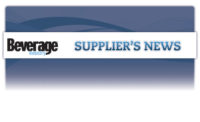5 key steps to risk management
Protect your fleet through driver training, scheduled vehicle maintenance

According to Merriam-Webster, risk is the possibility that something bad or unpleasant, such as an injury or a loss, will happen. The entity also defines management as the act or skill of controlling and making decisions about a business, department, sports team, etc. As such, one could infer that risk management is the act of controlling the possibility that something bad could happen.
The risk management process can be broken down into five key steps:
1. Examine operations to identify potential exposure to risk.
2. Assess and prioritize the frequency and severity of the potential risks.
3. Consider options for managing the risk, such as options to control the risk by avoidance, prevention, mitigation or transferring as well as determining whether the risk needs to be financed by retention (insurance deductible) or transferring (insurance coverage).
4. Select and implement the risk management option that strikes the best balance between effectiveness and affordability.
5. Monitor the results of the chosen risk management option and modify the plan as needed to achieve the desired effect.
From a fleet perspective, risk management is primarily focused on the prevention or mitigation of losses from vehicular accidents, as they represent one of the single largest causes of workplace injuries and fatalities.
Although vehicle accident losses are a major consideration, managing fleet risks spans the vehicle lifecycle early in the specin’g process, including driver training, safety policies, inspections and maintenance, and the final disposition of the vehicle when it’s retired from the fleet.
Reaching beyond the company’s vehicles, dock and loading operations at the warehouse also can present fleet risks. However, company vehicles are not the only ones at risk; non-owned vehicles used on the company’s behalf also can be exposed to risk.
Built safe
The first opportunity to prevent or mitigate fleet risks comes when a vehicle is initially spec’ed before purchase.
In addition to selecting safety options that control basic vehicle functions, like disc brakes, ergonomic factors are another important consideration. Fleet managers should question the following:
1. How does the type and design of the vehicle affect visibility on the road or when maneuvering in tight parking lots?
2. Can the driver’s compartment accommodate drivers who vary greatly in stature?
3. How ergonomical or easy is it for drivers to enter and exit the cab?
The cargo body and trailer configurations also can have an impact on the potential for driver injury or disability. Many distributors who have begun the transition from side-load to end-load equipment cite reduction of reaching and lifting injuries as a motivating factor.
Train, retrain and reward
Once the truck is configured, driver training and coaching is the next opportunity for a fleet to manage risk. Although driver training is important for new drivers, it’s equally as crucial when hiring experienced drivers. Fleet managers should note that just because a driver has years of experience, it doesn’t guarantee that the person was taught properly. Even the best drivers can let good habits slip over time.
Whether for a beginner, an experienced new hire, or an existing driver, ongoing coaching is the key to ensuring that good driving habits don’t slip over time. Because of the recent overhaul of the safety regulations focused on long-haul drivers, a wide variety of software and service offerings are available for monitoring, tracking and reviewing driver performance to aid in the coaching process.
Although many beverage fleets manage risk by monitoring driver performance, only a few fleet managers go the extra mile by recognizing and rewarding their safest drivers.
Safety policy
From a content and enforcement standpoint as well as pure existence, a comprehensive safety policy is another important element of fleet risk management. In a liability claim situation, the lack of a written safety policy and documentation of its enforcement could be interpreted as negligence on the part of the fleet.
At a minimum, a typical fleet safety policy should address driver credential reviews, accident/violation reporting requirements, as well as operational rules such as maximum speeds, cargo securement and passenger load. Also, given the widespread use of mobile devices, clear instructions as to how, when and where the devices can be used in the workplace should be spelled out in the safety policy.
Inspections and maintenance
Frequent and thorough vehicle inspections, beyond the minimum level required by motor vehicle regulations, are key to minimizing fleet risk. A thoroughly inspected and well-maintained vehicle is far less likely to suffer a failure in the field that could endanger the driver or other motorists. Here again, documenting the vehicle inspections and maintenance is an important risk management tool when defending the fleet from liability claims.
Vehicle disposition
The fine details surrounding the disposal of a vehicle also can expose a fleet to substantial risk. When a fleet sells a used vehicle, proper documentation is required to release the seller from future liability for the vehicle; otherwise, the fleet could be held liable for negligent operation by the buyer.
Dock operations
Similar to the fact that most traffic accidents happen close to home, many fleet accidents take place even closer — at the loading dock. Beyond using the proper safety equipment in the loading area, cross-training warehouse and driver personnel regarding risks on the dock and in the truck can greatly reduce the potential for accidents during loading and unloading.
NON-OWNED VEHICLES
Beyond company-owned vehicles, any vehicle used on behalf of the company, whether employee-owned, borrowed or rented, can expose a fleet to risk. Along with maintaining written policies regarding the use of non-owned vehicles, it’s generally a good idea for the fleet to be named as an additional insured on employee-owned vehicles.
Insurance Resources Fortunately, fleet risk management need not be a do-it-yourself process. In addition to software solutions and third-party service providers, many insurance companies offer risk management consulting as a benefit of coverage.
Looking for a reprint of this article?
From high-res PDFs to custom plaques, order your copy today!






